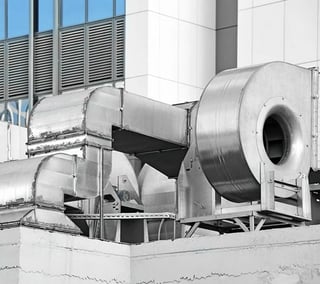
Municipalities and their Engineers often wonder why they should design and invest in a degasification system for their water treatment facility. This system removes unwanted gases from the water, which can improve the water quality and safety. Investing in such a system can therefore be beneficial. What are the problems and cost advantages that degasification will help you overcome?
Degasification is the most cost-effective means of providing higher-quality water and lowering your operational cost. Proper degasification reduces chemical consumption and TSS in treated water. It also prevents corrosive conditions, sulfur, and sulfur bacteria from forming in downstream conveyance and distribution systems.
This extends the life of your equipment. Here are 4 ways that a degasification system can solve your water problems:
1. Produce Higher Quality Water
Degasification eliminates the need for extra chlorine or caustic to be added to the final product water. It is used to remove H2S or reduce CO2 levels. We can reduce the need for chemicals by stripping the Hydrogen Sulfide (H2S) from the water with degasification. This results in lower Total Suspended Solids (TSS) levels and better taste for the consumer.
CO2 removal eliminates the necessity of adding Caustic Soda. This is to lower the pH after membrane treatment. This is so that a neutral pH level can be re-established. The elimination of the addition of Caustic improves water quality and alkalinity of the water.
2. Protects Equipment and Distribution Systems
Water with an excessive amount of Hydrogen Sulfide (H2S) is a danger to your water treatment equipment. It can come in a dissolved gaseous state or in a solid form. This threat extends to the downstream distribution system.
Hydrogen Sulfide can convert to Sulfuric Acid. This conversion will lower the pH in water or at the point of reaction.
Gases such as carbon dioxide can lower pH. This can create carbonic acid, a corrosive acid that can corrode equipment, pumps, and pipes.
High levels of H2S and CO2 in product water can damage equipment downstream of the distribution system. Residential consumers are at risk of corrosion from two chemicals in local water pipes, water heaters, pumps, and underground distribution lines. This corrosion risk is significant.
H2S and CO2 can damage industrial processes and food processing plants. These include distribution pipes, pumps, membranes, boilers, and other types of commercial equipment. Degasification of the water will help protect your equipment and render the water safe for use.
3. Protects Users
Degasification of water will help get rid of harmful gases. Water contaminated with gases has a number of negative health effects and is dangerous when consumed in higher concentrations. Exposure to Hydrogen Sulfide (H2S) should be avoided at all times as it is lethal.
Consuming higher dosages of chlorine also has a negative impact on your health. High levels of H2S and other organics can lead to the formation of Trihalomethane (THM). THM has been identified as a carcinogen. It can form in downstream water storage or distribution systems when organics and chlorine are present.
The production of THMs should be avoided at all times to reduce negative health impacts. Degasification can reduce the amount of H2S in water. This will make the water safe for use and consumption. Lowering the organic loading in the water will also help remove the H2S.
4. Economically Efficient
Degasification is the most cost-effective solution to remove H2S, and CO2, or to oxidize Iron. A degasification system can be incorporated into the final product water.
This system removes H2S, CO2, and Iron. This reduces the amount of chemicals consumed, drastically lowering the operational cost of the treatment facility. In addition, the water quality is improved, the equipment life is extended, and the protection of the consumer is increased.
A degasification system can help reduce capital costs. This is because it reduces the cost of replacing damaged equipment or assets. For more information or to learn more contact the professionals at DeLoach Industries Inc. at (941) 371-4995.
Related Blog: Why You Should be Using a Decarbonator to Lower CO2 Levels & Raise the pH of the Water.




